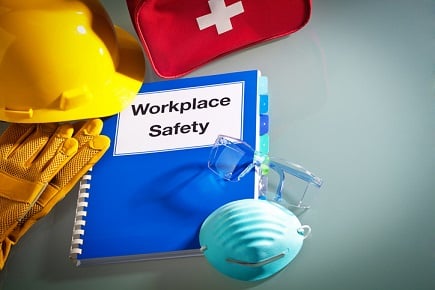
There’s still more work to be done to prevent accidents, says minister

The Ministry of Manpower has identified three “priority areas” to help improve workplace safety and health standards (WSH) for2017, said Minister of State for Manpower Sam Tan in a speech last week.
These are: falls prevention, onsite vehicular safety, and prevention of amputation injuries,
Falls prevention
Tan said is still the top contributor in workplace fatalities, “but concerted action by the industry have reduced the number of falls from heights fatalities by more than 45%, from 24 in 2009 to 13 in 2016.” Seven in 10 of these accidents occurred in small- and medium-sized enterprises (SMEs).
The government will increase its “MobileWork at Heights” visits to 300 this year, from 60 in 2016. “Under this programme, appointed WSH professionals will visit worksites and provide onsite practical guidance to supervisors and workers on Work at Heights safety. The aim is to equip our workers and supervisors with sufficient skills, understanding and knowledge, to enable them to implement Work at Heights safety precautions,” said Tan.
Work at Heights Case Study Booklet has also been published. It provides insights on how such accidents occurred and offers guidance on practical preventive measures.
Onsite vehicular safety
Tan identified incidents of workers being struck by moving vehicles as the second highest contributor to workplace fatalities. He said these were “largely caused” by the absence of a proper onsite vehicular safety management system. “For example, there were no clear demarcation of pathways to segregate workers and vehicular traffic within the premises.”
The government is launching a “Managing Onsite Vehicular Safety” (MOVeS) – an onsite compliance assistance programme, following a pilot test last year. WSH consultants will visit companies to assess work premises and guide them in developing and implementing onsite traffic safety management plans. A vehicular safety seminar is also planned later this year.
Prevention of amputation injuries
Tan said the ministry is “concerned with the increasing trend of amputation cases.” There were 143 amputation cases in 2016 – a 22% increase from the previous year. More than 70% involved the use of industrial machines and tools. Hand injuries accounted for about 90% of all cases.
The ministry and the WSH Council will organise a “Safe Hands Solutioning Session and Seminar” in the second half of the year, said Tan. “Through this platform, we hope to educate the industry on the proper use of hand tools and machine safety. Industry case studies will also be shared to help the participants understand good practices and put in place preventive measures such as machine guards to eliminate hand injuries.”
“More work to be done”
Workplace accidents could have been averted through the implementation of simple safety and health interventions by workers, supervisors and management, according to government investigations. These include the conduct of proper risk assessments, safety training and adoption of safe work procedures.
“There is still more work to be done to prevent the next accident,” said Tan. He added that the ministry, the Workplace Safety and Health (WSH) Council, the WSH Institute and industry stakeholders are working together with workers and companies to bring down the fatality rate further.